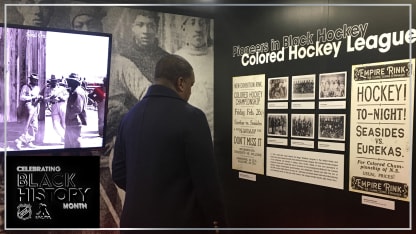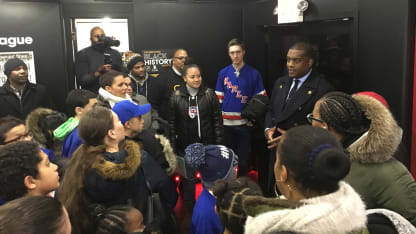This is the 11th year American Legacy Magazine has done a themed mobile tour. The truck will also make stops in Newark, New Jersey; Nashville; Tampa; Harrisburg, Pennsylvania; Philadelphia and Washington this month.
"It's to take history right into the neighborhoods," said Rodney J. Reynolds, the founder and CEO of the magazine. "We had the opportunity to provide an initial proposal to the NHL for consideration and they loved it. When they started looking at what they were going to do for Black History Month this year we really increased our level of talks. We actually had our first meeting in Detroit on Dec. 19, so you can see how quickly everything came together."
The NHL joined with Kwame Mason, who wrote, produced and directed the documentary "Soul on Ice: Past, Present and Future," which tells the story of black history in hockey, to help American Legacy Magazine curate the museum. They obtained artifacts from the Hockey Hall of Fame, the family of Herb Carnegie, who is widely considered to be the best black hockey player to never play in the NHL, and from the Black Cultural Center for Nova Scotia.
The museum features pictures, artifacts and historical documentations of Carnegie and the pioneers of black hockey history from Colored Hockey League from the 1800s in Nova Scotia. Black women in the game, including Hockey Hall of Famer Angela James, black hockey families and black Stanley Cup champions, most recently Washington Capitals forward Devante Smith-Pelly and defenseman Madison Bowey, are featured in exhibits.
There is a wall of achievements featuring P.K. Subban, Dirk Graham, Grant Fuhr and Jarome Iginla among others. Mason's documentary, "Soul on Ice," is constantly playing, and a television screen has a never-ending loop of all the black players who have played in the NHL, with information about each, in alphabetical order by their last name.



